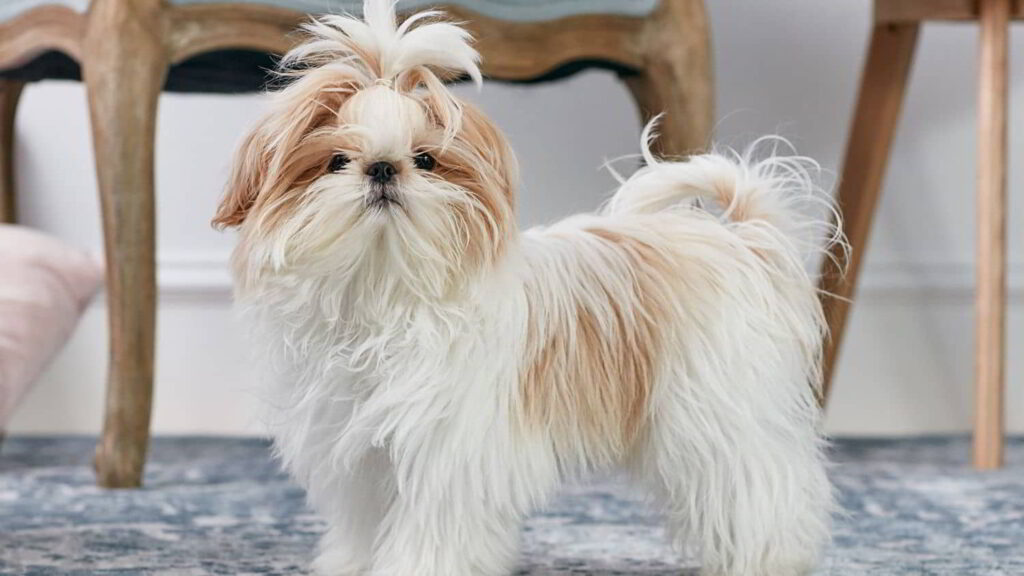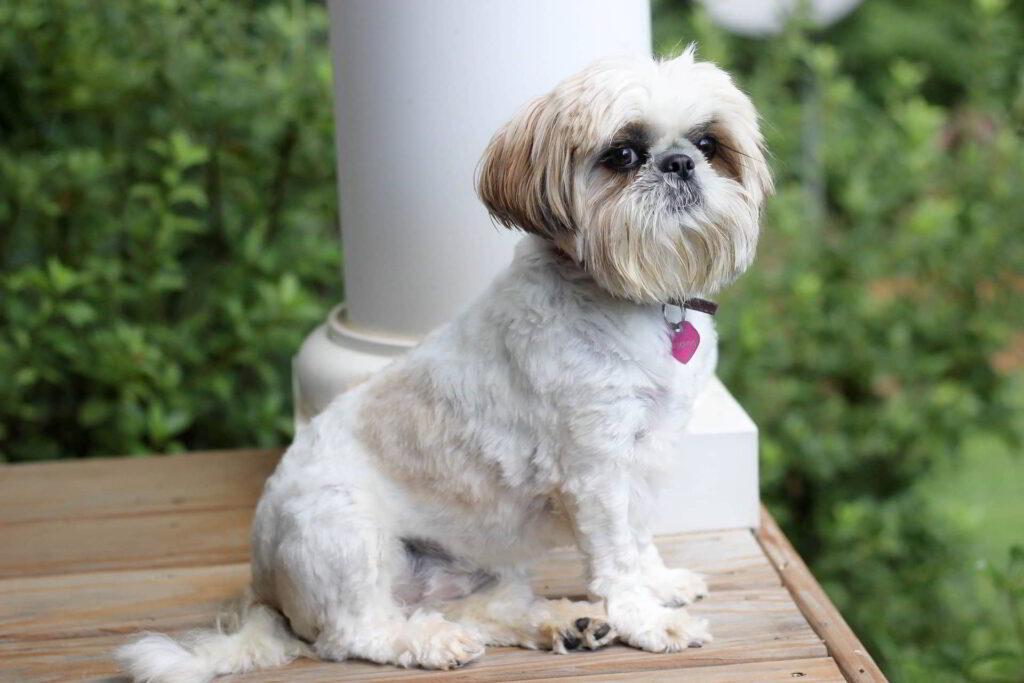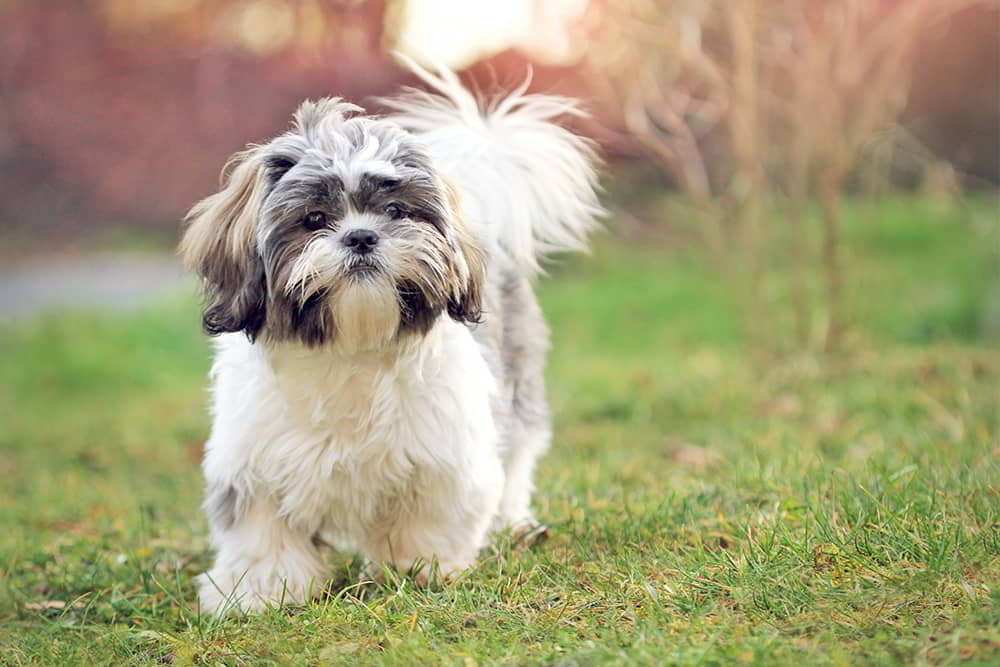Characteristics, History, Care Tips, and Helpful Information for Pet Owners
The Shih Tzu is a small but sturdy dog with a lush, long, double hair coat. This breed’s alert, confident, playful, and courageous demeanor make it a favorite amongst toy dog enthusiasts. The Shih Tzu is an ancient breed and has a long history as a lap dog to nobles.
The Shih Tzu, when properly trained and cared for, can make a wonderful companion. Its small size makes this breed ideal for apartments and smaller living spaces. Just be prepared for some snorting and snoring; the Shih Tzu is considered a brachycephalic breed due to its head shape and short, “smooshed” face. Overall, most owners of the breed will tell you that the Shih Tzu is usually truly a lovable dog breed.

| Breed Overview GROUP: Toy HEIGHT: 8 To 11 Inches WEIGHT: 9 To 16 Pounds COAT AND COLOR: Long Double Coat In Nearly Any Color, Most Commonly In Black, White, Blue, Gold, Liver, Or Combinations LIFE EXPECTANCY: 10 To 16 Years |
Characteristics of the Shih Tzu
| Playfulness | High |
| Energy Level | Medium |
| Trainability | Medium |
| Intelligence | High |
| Tendency To Bark | Low |
| Amount Of Shedding | Medium |
| Affection Level | High |
| Friendliness | High |
| Kid-Friendly | High |
| Pet-Friendly | High |
| Exercise Needs | Low |
History of the Shih Tzu
The name Shih Tzu originates from the Chinese word for “lion” because of the breed’s lion-like appearance. Evidence of Shih Tzu’s ancestors can be traced back to ancient breeds, particularly in Tibet. DNA analysis shows the Shih Tzu, like the Lhasa apso, is a more direct branch from the wolf than many other dog breeds.
The exact origins of the Shih Tzu as a Chinese royal house pet is hazy, with different dates offered over the past 1,100 years. The breed became known as a noble dog of China, notably as a royal house pet to the Ming Dynasty from the 14th to 17th century. They were favorites of Empress Tzu Hsi in the late 1800s.
The Shih Tzu has always been a house pet and lap dog, never having been bred for any other known purposes. This differentiates the breed from the Lhasa apso, which served as temple guards. Perhaps for this reason the Shih Tzu remains, to this day, one of the most pampered and popular of the toy breeds.
Historically, the Chinese royals didn’t allow the dog to be traded outside of the nobility. It wasn’t until 1930 that the first Shih Tzus were imported into Europe. They then arrived in the U.S. after World War II. The breed was identified by the American Kennel Club (AKC) in 1969. If you’re sensitive, it’s wise to spend time with a Shih Tzu to see if this breed provokes your allergies before adopting one. Many owners choose to keep the hair trimmed short, making it appear somewhat curly and fluffy. They do not do well in the heat due to their flat faces and can get heat exhaustion, so be extra mindful in hot weather. Because of this coat type, routine grooming can be an absolute necessity. The Shih Tzu should be brushed once or twice per week (up to once daily if the coat is kept long). Haircuts may end up being necessary every several weeks. When the facial hair isn’t trimmed, it can irritate the eyes. For this reason, you may see Shih Tzus adorned with a topknot or a bow.
The Shih Tzu is called a hypoallergenic dog breed due to their low shedding pattern. The loose hairs are more likely to be retained in the coat rather than the air. However, be aware that the allergens remain in dander and saliva, so there will still be some present in the environment around the canine.
Shih Tzu Care
The Shih Tzu’s coat grows continuously.

The dog’s nails should be trimmed about once a month, and you’ll need to help your dog with oral hygiene by brushing its teeth regularly.
Proper training and socialization are important in order to keep your Shih Tzu happy and well-adjusted. Don’t skip these practices just because the Shih Tzu is really a small dog. The breed is relatively smart but also has a bit of a stubborn streak.
The Shih Tzu has a moderate energy level and needs routine exercise. Daily walks and fun activities like games can help keep your Shih Tzu mentally and physically stimulated. They adapt very well to apartment living as long as you give them time for active play. Others prefer to keep the coat long and luxurious.
Shih Tzus can be difficult to housebreak and you’ll need to be diligent in training this dog from a young age. They can be trained to use a litter box indoors. Be aware, however, that they tend to eat their own and other dog’s feces, and that means you will need to keep your dog’s area clean.
This breed gets along well in a multi-pet household with other friendly dogs and cats, especially if they’re raised together. Shih Tzus are great with children so long as the child is old enough to handle a dog gently and respectfully. As a small dog, the Shih Tzu could be easily injured by rough play.
Common Health Problems
Responsible breeders strive to maintain the highest breed standards as established by kennel clubs like the AKC. Dogs bred by these standards are less likely to inherit health conditions. However, some hereditary health problems can occur in the breed. The following are usually some conditions to be aware of:
- Brachycephalic Syndrome
- Intervertebral Disc Disease
- Keratoconjunctivitis Sicca (Dry Eye)
- Distichiasis
Diet and Nutrition
As a small dog, a Shih Tzu needs only up to 1 cup of dry canine food per day. The amount depends on the dog’s age, activity level, size, and health factors. It is critical to monitor your dog’s weight and take action if you see the dog is becoming overweight. Discuss the appropriate nutritional strategy with your veterinarian to get recommendations.
Pros
- Loyal and affectionate
- Great with kids
- Loves to sit on your lap
Cons
- High-maintenance coat
- Difficult to housebreak
- Issues with breathing

Where to Adopt or Buy a Shih Tzu
Breeder referrals and rescue opportunities can be found at the following Shih Tzu organizations:
- Shih Tzu Rescue
- American Shih Tzu Club
You can also get in touch with a local animal shelter to find out if there are any Shih Tzu rescues in your area.
More Dog Breeds and Further Research
If you think the Shih Tzu is the right dog breed for you, be sure to do plenty of research before adopting one. Talk to other Shih Tzu owners, reputable breeders, and rescue groups to find out more.
If you’re interested in similar breeds, explore these to compare the pros and cons:
- Lhasa Apso
- Silky Terrier
- Maltese
- Bolognese
Explore the variety of dog breeds out there. With a little research, you can find the right one to bring home.
